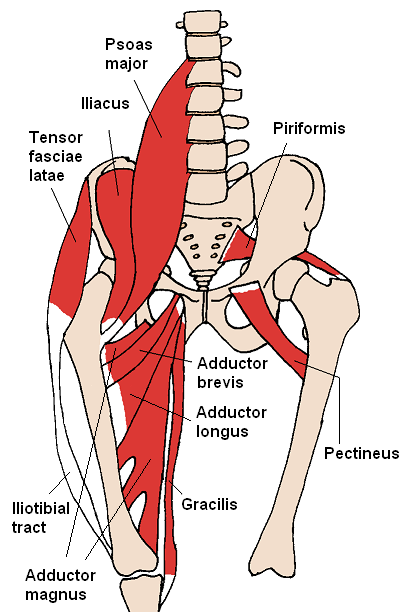Gracilis

| |
| Gracilis | |
|---|---|
| Muscle Type | |
| Origin | ischiopubic ramus |
| Insertion | tibia (pes anserinus) |
| Action | flexes, medially rotates, and adducts the hip |
| Synergists | |
| Antagonists | |
| Spinal innervation | |
| Peripheral Innervation | anterior branch of Obturator Nerve |
| Vasculature | medial circumflex femoral artery |
The gracilis muscle is a fusiform muscle located in the medial compartment of the thigh. Superiorly it is thin, flattened and broad, and tapers is it descends. It is the most superficial of the adductor muscles, and is innervated by the obturator nerve (L2-L4).
Functionally, the gracilis muscle acts as a primary adductor and medial rotator of the thigh, as well as assisting in flexion of the knee joint. It also plays a role in stabilizing the knee during standing and ambulation.
Due to its superficial location and relatively small size, the gracilis muscle is commonly used as a donor muscle for reconstruction in various surgical procedures, including anterior cruciate ligament (ACL) repair and urethral reconstruction.
Clinically, dysfunction of the gracilis muscle can present as pain and weakness in the medial thigh and knee, and can be assessed through manual muscle testing and imaging techniques such as MRI.

